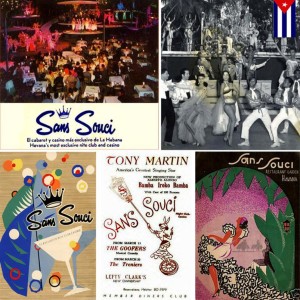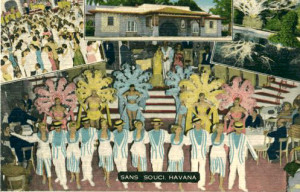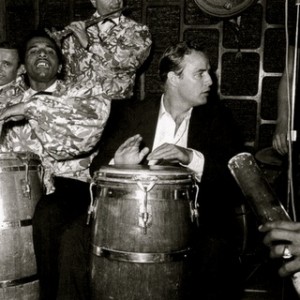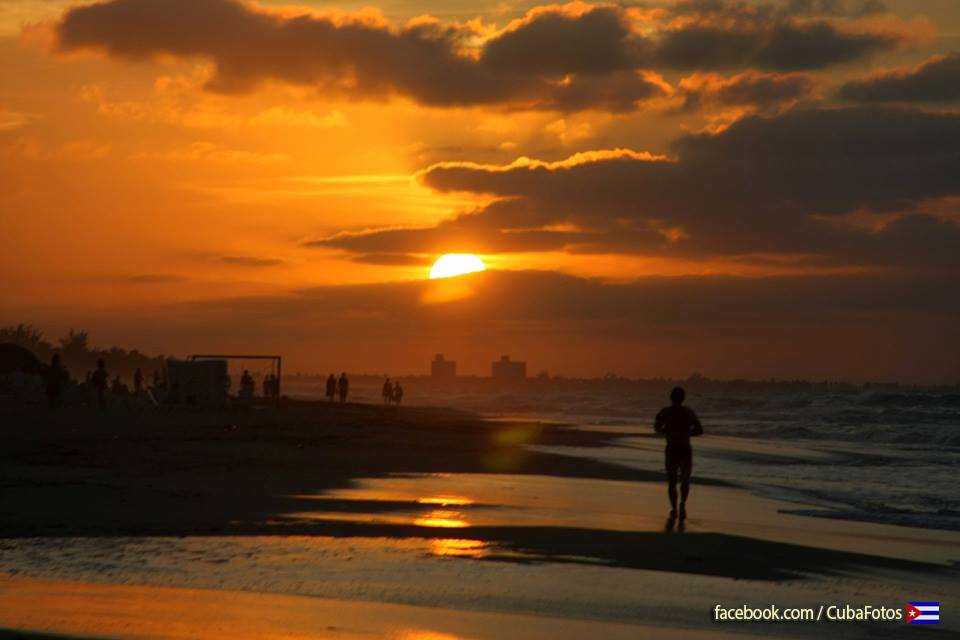CUBA’S ELISEO GRENET Life. El Súcu Súcu.
Born in Havana in 1893 and since the age of nine surprised those who knew him with a musical that premiered at the school where he studied. He spent several years of music making.
Were the 40 ‘s. That day Eliseo Grenet , creator of the very popular ‘ Mama Ines ‘ , was more cheerful than ever. Your sucu – sucu ‘Felipe Blanco’ , as they say, had just composed , took possession , with its infectious rhythm , the preference of the dancers and in that day , in a private studio Radiocentro , took unpublished nuances in the voices and guitars trio Servando Diaz , with the assistance of one Grenet , was riding with a view to presenting imminent American theater . The compasses are pinero tasty – ” You do not have the majases cave / Felipe Blanco is the covered … ” – escaped through the open door of the premises and contagiaban artists and employees of the CMQ when someone approached the composer to communicate , not without some complacency , that nothing worth testing both when the Ethics Commission had decided to suspend Radial diffusion of the piece.
Grenet seemed to downplay the comment ; certainly would not give it and continued with his work as if nothing had been said , but it was useless to pretend indifference. He knew that this suspension could jeopardize the success of the show planned for America. His head ached terribly and when he left the studio and went to the office of a top executive at the radio station or desmintiese to confirm the news . The man gilded pill.
The composer listened with relief those words . If it was only two verses , I was ready to replace them as long as your sucu – sucu not suspended. But the headache would not budge and had become greater when his wife, Maria Eugenia Garcia, went together to pick to attend a reception to be held at the Embassy of Colombia . There discomfort became intolerable and forced him to retire to his home. The old hypertension that afflicted Grenet crisis did was struck down by a stroke . Doctors could do nothing to prevent the hemiplegia . At two o’clock the next day came four hours in agony and ceased to exist after the author of the pesca’o If you ask me , the blackberry and If I die on the road , among other compositions walked his name around the world and raised high Cuban music. They say those who saw him in his last moments that while life was going right arm moving rhythmically as if sensing a strange melody that was determined to convey to an invisible orchestra .
His friend , the poet Nicolas Guillen , in chronic occasion of his death was released in November 1950, described it thus: ” Eliseo Grenet was 57 years old , but pretended 40 . Small size , wide shoulders , short neck holding a strong head , strong lines and well distributed , the popular composer ‘s physical appearance provided a sui generis . One inch less , and would have been a catastrophe. Seeing him , we were always inclined to grant two inches … ”
ELISEO GRENET COMPOSITION : AY MAMA INES ! and Other ..
http://youtu.be/2DjyZUK-2zY
IN HIS LATER LIFE .
His last years were spent in Cuba engaged in a battle as fierce as sterile against the mambo , which considered a distortion of Cuban music . In the Isle of Pines , months before his death , he discovered the sucu – sucu and attracted wide attention . It was a dance danced his compatriots old time , and owed his name to the distinctive sound that caused the dancers on the floor rhythmically dragging feet sucu , sucu , sucu …
Grenet fell in love with that pace and soon his Sunday Pantoja became a hit , while Philip White sounded the whole day in the domestic radios and automatic machines commercial establishments and more than a humorist took his letter and point starting to develop a political joke or rugged theme .
– Now I can die in peace , ‘said the composer because sucu is sucu – Cuban music , free from pollution extranjerizante hateful .
ELISEO GRENET : ” Drume BOLD ”
He did not die in peace , but gripped by the threat of Radial Ethics Commission on its Felipe Blanco , which does not mean it was the disgust which caused her death. But that people interpreted it . Thousands of people filed past his body and accompanied his remains to the cemetery on pilgrimage silent solidarity.
When the death of the troubadour Manuel Corona, who asked that his grave had with coffee and guitars, Eliseo Grenet claimed to friends that not despidiesen with funeral marches , but it will sing their favorite compositions , Mama Ines , Facundo … But the teacher Gonzalo Roig , when the time and the desire discrepancy criterion Grenet and some of his friends , he preferred to play, with his leading the Band, LAMENTO CUBANO.
CiroBianchi/Wiki/Excerpt/internetphoto/youtube/thecubanhistory.com
The Cuban History, HOLLYWOOD.
-CUBA TODAY-
Arnoldo Varona, Editor.
EL SÚCU SÚCU de la Cubana Isla de Pinos. Vida de ELISEO GRENET.
Nació en La Habana, en 1893 y ya desde los nueve años de edad sorprendió a los que lo conocían con una revista musical que estrenó en la escuela donde estudiaba. Así pasaron varios años de creación musical.
Eran los 40’s. Ese día Eliseo Grenet, el popularísimo creador de ‘Mamá Inés’, estaba más alegre que nunca. Su sucu-sucu ‘Felipe Blanco’ que, como quien dice, acababa de componer, se adueñaba, con su ritmo contagioso, de la preferencia de los bailadores y en aquella jornada, en un estudio privado de Radiocentro, adquiría matices inéditos en las voces y guitarras del trío de Servando Díaz que, con la asesoría del propio Grenet, lo montaba con vistas a su presentación inminente en el teatro América. Los compases del sabroso son pinero –“Ya los majases no tienen cueva/ Felipe Blanco se las tapó…”- escapaban por la puerta entreabierta del local y contagiaban a artistas y a empleados de la CMQ cuando alguien se acercó al compositor para comunicarle, no sin cierta complacencia, que de nada valía ensayar tanto cuando la Comisión de Ética Radial había resuelto suspender la difusión de la pieza.
Grenet pareció restar importancia al comentario; no quiso darlo por cierto y prosiguió con su trabajo como si nada le hubiesen dicho, pero era inútil que fingiera indiferencia. Sabía muy bien que aquella suspensión podía comprometer el éxito del espectáculo previsto para el América. La cabeza le dolía ya terriblemente cuando abandonó el estudio y se dirigió hacia la oficina de un alto ejecutivo de la emisora para que confirmase o desmintiese la noticia. El hombre le doró la píldora.
El compositor escuchó con alivio aquellas palabras. Si se trataba solo de dos versos, estaba dispuesto a sustituirlos con tal de que su sucu-sucu no fuera suspendido. Pero el dolor de cabeza no cedía y se había hecho mayor cuando su esposa, María Eugenia García, pasó a recogerlo para asistir juntos a una recepción que tendría lugar en la embajada de Colombia. Allí el malestar se tornó intolerable y lo obligó a retirarse a su casa. La vieja hipertensión arterial que aquejaba a Grenet hacía crisis y lo hacía caer fulminado por un derrame cerebral. Nada pudieron hacer los médicos por impedir la hemiplejia. A las dos de la mañana del día siguiente entraba en agonía y cuatro horas después dejaba de existir el autor de Si me pides el pesca’o, La mora y Si muero en la carretera, entre otras composiciones que pasearon su nombre por el mundo y pusieron muy en alto la música cubana. Dicen los que lo vieron en sus momentos postreros que mientras se le iba la vida movía acompasadamente el brazo derecho como si estuviese percibiendo una extraña melodía que se empeñaba en transmitir a una orquesta invisible.
Su amigo, el poeta Nicolás Guillén, en la crónica que con motivo de su muerte dio a conocer en noviembre de 1950, lo describía así: “Eliseo Grenet tenía 57 años, pero fingía 40. Pequeña la talla, anchos los hombros, corto el cuello que sostenía una cabeza poderosa, de líneas fuertes y bien distribuidas, el físico del popular compositor ofrecía un aspecto sui géneris. Una pulgada menos, y habría sido la catástrofe. Viéndole, nos sentíamos inclinados siempre a concederle dos pulgadas más…”
ELISEO GRENET COMPOSITION: AY MAMA INES ! y Otras..
http://youtu.be/2DjyZUK-2zY
EN SUS ÚLTIMOS AÑOS DE VIDA.
Sus últimos años en Cuba los pasó enfrascado en una lucha tan feroz como estéril contra el mambo, que consideró una desnaturalización de la música cubana. En Isla de Pinos, meses antes de su muerte, descubrió el sucu-sucu y le llamó poderosamente la atención. Era una danza que los pineros bailaban desde muy atrás y que debía su nombre al sonido característico que provocaban los bailadores sobre el piso al arrastrar rítmicamente los pies: sucu, sucu, sucu…
Grenet se enamoró de ese ritmo y pronto su Domingo Pantoja se convirtió en un hit, en tanto que Felipe Blanco sonaba el día entero en los radios domésticos y en los aparatos automáticos de los establecimientos comerciales y más de un humorista tomaba su letra como punto de partida para elaborar un chiste político o de temática escabrosa.
-Ya puedo morir tranquilo –decía el compositor- porque el sucu-sucu es música cubana, libre de la odiosa contaminación extranjerizante.
ELISEO GRENET: “DRUME NEGRITA”
No murió en paz, sino atenazado por la amenaza de la Comisión de Ética Radial sobre su Felipe Blanco, lo que no quiere decir que fuera el disgusto lo que le provocó la muerte. Pero así lo interpretó la gente. Millares de personas desfilaron ante su cadáver y acompañaron sus restos al cementerio en peregrinación silenciosa y solidaria.
Cuando la muerte del trovador Manuel Corona, que pidió que hubiese junto a su tumba café y guitarras, Eliseo Grenet reclamó a sus amigos que no lo despidiesen con marchas fúnebres, sino que le cantaran sus composiciones favoritas, Mamá Inés, Facundo… Pero el maestro Gonzalo Roig, llegado el momento y en discrepancia con el deseo de Grenet y el criterio de algunos de sus amigos, prefirió ejecutar, al frente de la Banda Municipal, el Lamento cubano.
CiroBianchi/Wiki/Excerpt/internetphoto/youtube/thecubanhistory.com
The Cuban History, HOLLYWOOD.
-CUBA HOY-
Arnoldo Varona, Editor.












